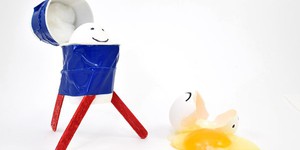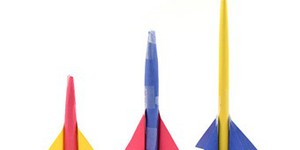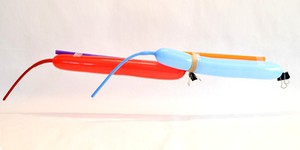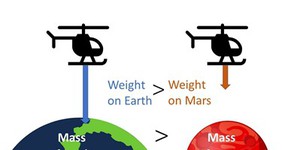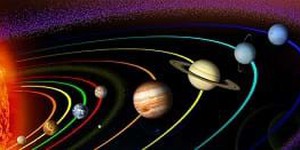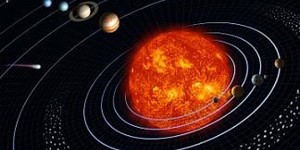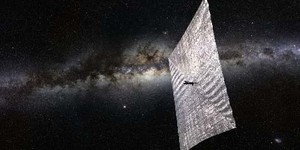Middle School, Space Exploration Lesson Plans (9 results)
Space exploration is an exciting and wide-ranging area. Getting into space (and back down) is hard, involving rockets and launch vehicles, satellites, spacecraft, re-entry systems, landers and rovers, robots, and orbital mechanics, not to mention hypothetical technologies like space elevators and artificial gravity. To survive and thrive in space, we must understand many additional issues such as human performance in space, the space economy, and the science of astronomical bodies.
|
Select a resource
Sort by
|
Lesson Plan
Grade: 6th-8th
10 reviews
The egg drop project is a time-honored tradition in many science classrooms. Students build a device to protect an egg and prevent it from breaking when dropped. This project typically relates to lessons about Newton's laws of motion or potential and kinetic energy. However, it is also a great way for students to practice the engineering design process, and learn about the importance of design iteration and learning from failure.
Read more
NGSS Performance Expectations:
Featured

Try our new Science Project Pathways in Google Classroom. One tool to plan, assign, and manage a science project in your class. Simply enter the project start date to get a customizable science project schedule that breaks the science project into a series of smaller more manageable assignments to keep students on track. The assignments use Science Buddies guide to the scientific method to take students step-by-step through a science project. From the schedule, teachers can make assignments in Google Classroom and view student progress on each assignment.
Lesson Plan
Grade: 6th-8th
2 reviews
This hands-on science lesson will help your students get a more accurate view of the solar system by making a scale model. They will do the calculations, make model planets, and find out where to place them so their model reflects reality. Seeing the relative size of the eight planets and their distance from the Sun displayed before them will allow your students to grasp the structure and vastness of the solar system.
Read more
NGSS Performance Expectations:
Lesson Plan
Grade: 6th-8th
20 reviews
Do you need a fun, easy way to teach your students about the scientific method? Try this lesson that uses rockets made from nothing but paper, tape, and straws.
An elementary school version of this lesson plan is also available.
Read more
NGSS Performance Expectations:
Lesson Plan
Grade: 6th-8th
5 reviews
Learn about real space flight and Newton's laws of motion with this fun lesson! This new twist on a classic project lets your students build a multi-stage balloon rocket that they can launch across the classroom.
Read more
NGSS Performance Expectations:
Lesson Plan
Grade: 6th-8th
2 reviews
Space exploration poses many challenges. In this lesson, students will explore how flying a helicopter on Mars is different from flying a helicopter on Earth due to the difference in the helicopter's weight on Mars and the thin Martian atmosphere. Students will follow the engineering design process to design and build paper helicopters that might be able to fly on Mars. Before testing their different helicopter designs, students will revisit the concept of gravity, and apply their knowledge to…
Read more
NGSS Performance Expectations:
New
Lesson Plan
Grade: 6th-12th
Create a two-part system for filtering greywater. Teams will focus on communication and systems engineering as they build separate components to filter solid and liquid waste and then combine them into one device.
Learning Objectives
Students will:
Consider the potential effects of drought and how greywater could be part of the solution.
Design a system for filtering out solid waste or liquid waste.
Consider effective communication strategies with their team.
Collaborate on their design…
Read more
Lesson Plan
Grade: 6th-8th
Students explore orbit transfers and, specifically, Hohmann transfers. They investigate the orbits of Earth and Mars by using cardboard and string. Students learn about the planets' orbits around the sun, and about a transfer orbit from one planet to the other. After the activity, students will know exactly what is meant by a delta-v maneuver!Engineering Connection
Aerospace engineers must be creative when planning the best routes and methods to send a spacecraft from…
Read more
NGSS Performance Expectations:
Lesson Plan
Grade: 6th-8th
Students use water balloons and a length of string to understand how the force of gravity between two objects and the velocity of a spacecraft can balance to form an orbit. They see that when the velocity becomes too great for gravity to hold the spacecraft in orbit, the object escapes the orbit and travels further away from the planet.Engineering Connection
Engineers and scientists make amazingly precise calculations so that a spacecraft's journey is timed exactly to…
Read more
NGSS Performance Expectations:
Lesson Plan
Grade: 4th-7th
Learners explore the properties of materials by designing a barrier that will protect a satellite from colliding objects. They test out multiple combinations of materials and collect data on the results to determine which materials are the most effective at shielding the satellites from the hazards of space debris.
Learning Objectives
Students will:
Design a barrier that can protect the satellite from high-velocity impacts with space debris.
Explore design considerations based on…
Read more
Lesson Plan
Grade: 6th-8th
Working as if they were engineers, students design and construct model solar sails made of aluminum foil to move cardboard tube satellites through "space" on a string. Working in teams, they follow the engineering design thinking steps—ask, research, imagine, plan, create, test, improve—to design and test small-scale solar sails for satellites and space probes. During the process, learn about Newton's laws of motion and the transfer of energy from wave energy…
Read more
NGSS Performance Expectations:
|


